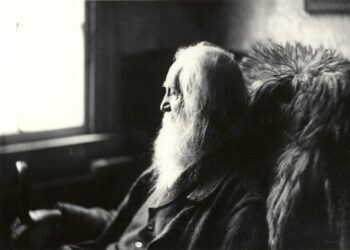Introduction
Mutability Summary By Percy Bysshe Shelley is a brief yet impactful poem written by Percy Bysshe Shelley in 1816. This poem encapsulates the essence of Romanticism, emphasizing individual experience and deep emotional resonance. The central theme revolves around the inevitability of change, both in the natural world and in human life. Shelley contemplates how everything in existence is subject to the forces of time and change, ultimately leading to the conclusion that permanence is an illusion.Mutability Summary By Percy Bysshe Shelley
Summary of Mutability
Mutability consists of 14 lines, structured as a sonnet that follows a specific rhyme scheme. The poem is divided into two sections: the first half introduces the theme of change through natural imagery, while the second half delves into the implications of this change on human existence and consciousness.
Read More
Opening Stanza: Nature of Change
The poem opens with the assertion that change is an inherent quality of life. Shelley begins by acknowledging the beauty of the natural world but quickly juxtaposes it with the notion that this beauty is fleeting. The imagery of changing seasons serves as a metaphor for the transitory nature of existence.
- Imagery of Nature: Shelley describes how nature is in a constant state of flux, symbolizing the broader changes that occur in life. The natural world, with its seasons, represents the cycle of birth, growth, decay, and death.
- Transience of Beauty: Shelley notes that beauty is not permanent; it fades with time. This acknowledgment sets the stage for a deeper exploration of the relationship between beauty and the ephemeral nature of life.Mutability Summary By Percy Bysshe Shelley

Mutability Summary By Percy Bysshe Shelley
The Human Experience
As the poem progresses, Shelley shifts his focus to the human experience, reflecting on how individuals are also subject to change. He expresses a sense of melancholy as he contemplates the fleeting nature of human emotions, aspirations, and achievements.
- Emotional Transience: The poet illustrates how emotions and experiences can change rapidly, mirroring the changes in nature. Joy, sorrow, love, and despair are all transient states that humans experience, highlighting the impermanence of life.
- Existential Reflection: Shelley invites readers to reflect on their own lives and the inevitability of change. He suggests that the search for stability and permanence is ultimately futile, as all things are bound to change.
The Inevitability of Change
In the latter part of the poem, Shelley emphasizes the inevitability of change as a fundamental aspect of existence. He presents change not as something to be feared but as an intrinsic part of the human experience. This philosophical perspective encourages acceptance of change and a deeper understanding of life’s transient nature.
- Acceptance of Change: Shelley advocates for embracing change rather than resisting it. He suggests that by acknowledging the impermanence of life, individuals can find peace and appreciation for the beauty that exists in the moment.
- Philosophical Insights: The poet reflects on the nature of existence itself, contemplating how everything is interconnected and in a state of constant flux. This interconnectedness highlights the universal nature of change, affecting all living beings.Mutability Summary By Percy Bysshe Shelley
Conclusion: The Cycle of Life
Mutability concludes with a profound reflection on the cycle of life and the acceptance of change. Shelley implies that while everything may change, this very change is what gives life its richness and depth. The poem encapsulates the idea that life is a series of moments, each beautiful and significant in its own right.Mutability Summary By Percy Bysshe Shelley
- Embracing the Present: The conclusion serves as a reminder to appreciate the present moment, as it is fleeting. The beauty of life lies in its transience, and by embracing this reality, individuals can live more fully.
- Enduring Legacy: Though specific experiences may fade, the essence of those experiences contributes to the overall tapestry of life. Shelley suggests that the memories and emotions associated with these moments endure even as life continues to evolve.
Read More
Themes in Mutability
1. Change and Impermanence
The primary theme of Mutability is the inevitability of change. Shelley explores how everything in life—nature, emotions, and experiences—is subject to the forces of change. This theme underscores the transient nature of existence and the futility of seeking permanence.
2. The Beauty of Transience
Shelley emphasizes that beauty is inherently temporary. While the natural world and human experiences may be fleeting, their beauty lies in their impermanence. This perspective encourages appreciation for the present moment and the richness of experiences, no matter how brief.Mutability Summary By Percy Bysshe Shelley
3. Existential Reflection
The poem invites readers to engage in existential reflection, contemplating the nature of life and their place within it. Shelley encourages a deeper understanding of the interconnectedness of all living beings and the universal experience of change.Mutability Summary By Percy Bysshe Shelley
4. Acceptance of Change
Shelley advocates for accepting change as an integral part of life. Rather than resisting change, individuals should embrace it, recognizing that it contributes to the beauty and complexity of existence.
5. Interconnectedness of Life
The poem highlights the interconnectedness of all living beings and experiences. Change is a universal force that affects everyone, creating a shared understanding of the human condition.
Structure and Style
Mutability is structured as a sonnet, adhering to a specific rhyme scheme (ABABCDCDEFEFGG) typical of traditional English sonnets. This structure enhances the poem’s musicality and allows for a concentrated exploration of its themes.
1. Imagery
Shelley employs vivid imagery throughout the poem to illustrate the theme of change. Descriptions of nature, such as the changing seasons, create a visual representation of transience and evoke emotional responses in readers.Mutability Summary By Percy Bysshe Shelley

2. Symbolism
Symbolism plays a significant role in Mutability, with nature representing the broader themes of change and impermanence. The changing seasons serve as a powerful metaphor for the cycles of life and the inevitability of transformation.
3. Lyrical Language
Shelley’s lyrical language enhances the poem’s emotional resonance. The rhythm and flow of the words create a musical quality, inviting readers to engage with the poem on both an intellectual and emotional level.
4. Philosophical Musings
The poem is infused with philosophical reflections, encouraging readers to contemplate the nature of existence. Shelley’s insights into the human experience and the inevitability of change invite deep reflection and introspection.
Read More
Conclusion
Mutability by Percy Bysshe Shelley is a poignant exploration of the nature of change and the impermanence of life. Through vivid imagery and philosophical musings, Shelley invites readers to reflect on their own experiences and embrace the transitory nature of existence. The poem serves as a reminder to appreciate the beauty of the present moment, acknowledging that while everything may change, the essence of those experiences contributes to the richness of life.Mutability Summary By Percy Bysshe Shelley
In a world that often seeks stability and permanence, Shelley’s insights encourage acceptance of change and an appreciation for the fleeting moments that define our lives. Mutability stands as a testament to the complexity of the human experience and the beauty found within the cycle of life.Mutability Summary By Percy Bysshe Shelley
FAQ
1. What is the main theme of Mutability?
The main theme of Mutability is the inevitability of change and the transience of life. Shelley explores how everything in existence is subject to the forces of change, ultimately concluding that permanence is an illusion.
2. How does Shelley use nature in the poem?
Shelley uses nature as a metaphor for change, illustrating how the natural world is in a constant state of flux. The changing seasons represent the cycles of life, highlighting the beauty and impermanence of existence.
3. What is the significance of the title Mutability?
The title Mutability reflects the central theme of the poem: the quality of being changeable. It encapsulates Shelley’s exploration of the transient nature of life and the inevitability of change.
4. How does Shelley portray human emotions in the poem?
Shelley portrays human emotions as transient and fleeting, paralleling the changes found in nature. The poem acknowledges the complexity of emotions and experiences, emphasizing their impermanence.
5. What philosophical insights does Shelley offer in Mutability?
Shelley offers insights into the nature of existence, encouraging acceptance of change as an integral part of life. He invites readers to reflect on their place within the interconnectedness of all living beings.
6. How does the poem reflect Romantic ideals?
Mutability reflects Romantic ideals through its emphasis on individual experience, emotion, and the connection to nature. Shelley’s exploration of beauty and transience exemplifies core tenets of Romanticism.
7. What literary devices are prominent in Mutability?
Prominent literary devices in the poem include vivid imagery, symbolism, and lyrical language. These devices enhance the poem’s themes and emotional impact, contributing to its overall resonance.
8. How does the poem encourage acceptance of change?
Shelley encourages acceptance of change by highlighting its inevitability and the beauty found within it. He suggests that embracing change can lead to a deeper appreciation of life’s richness.Mutability Summary By Percy Bysshe Shelley
Read More

















